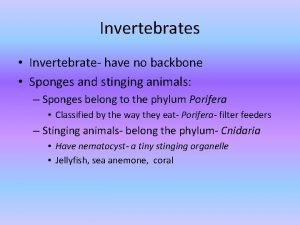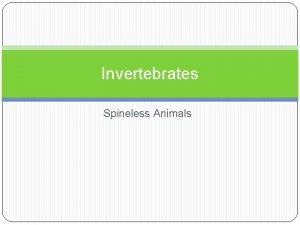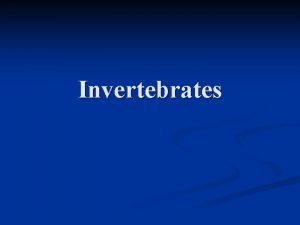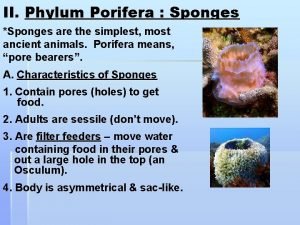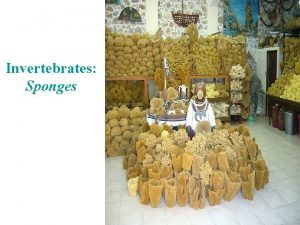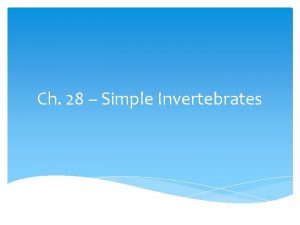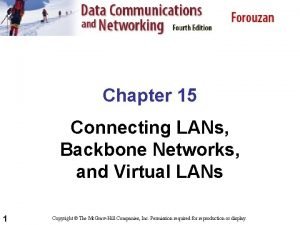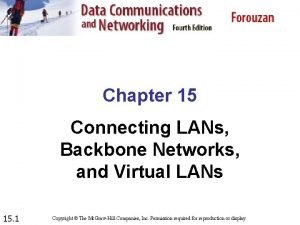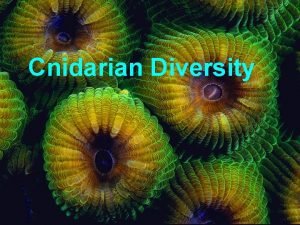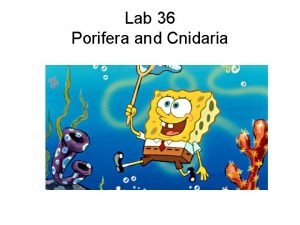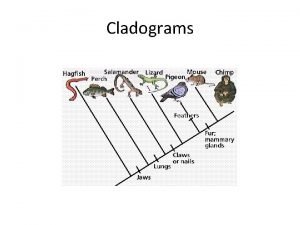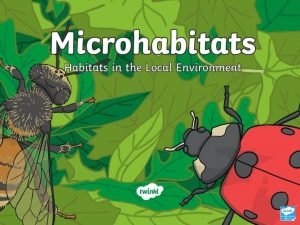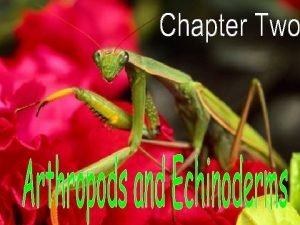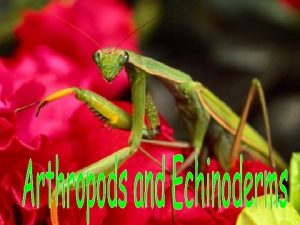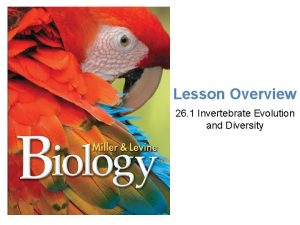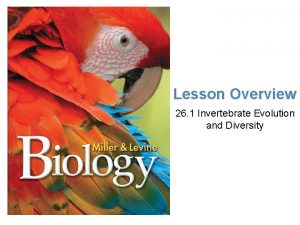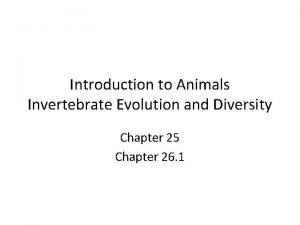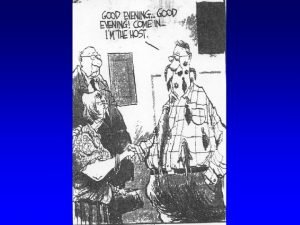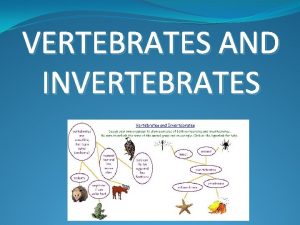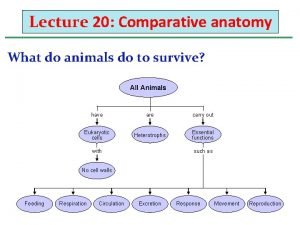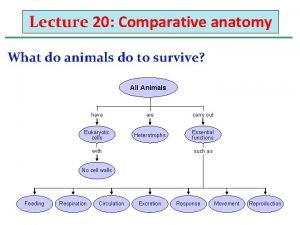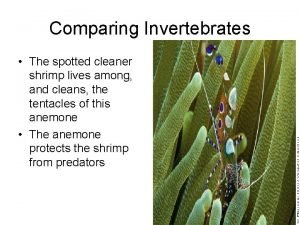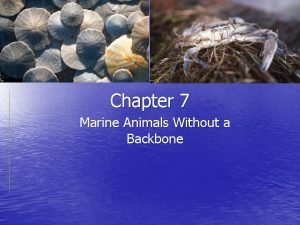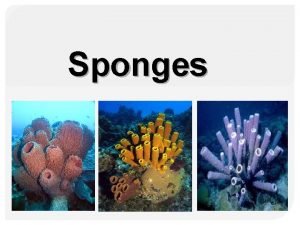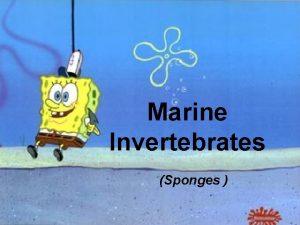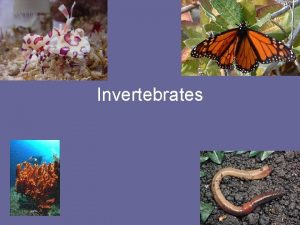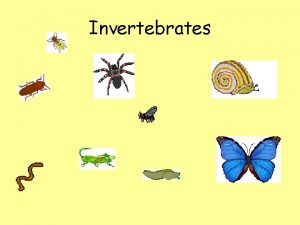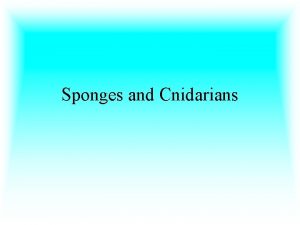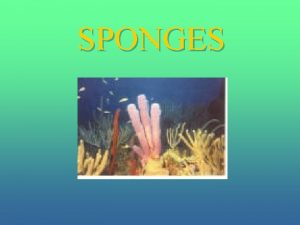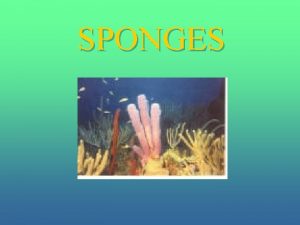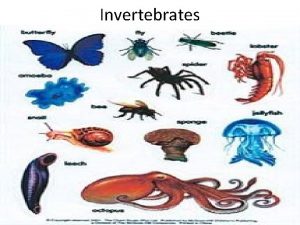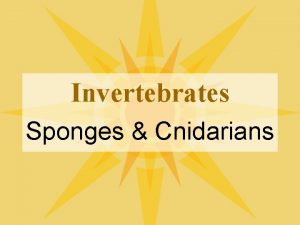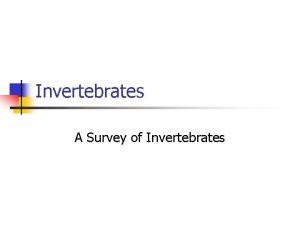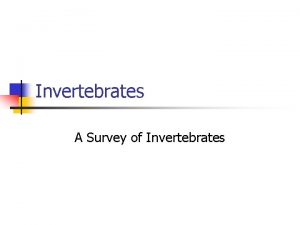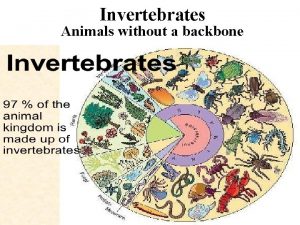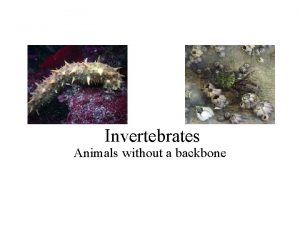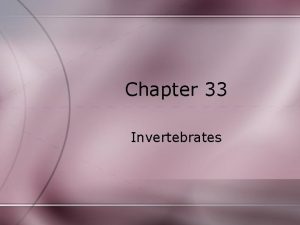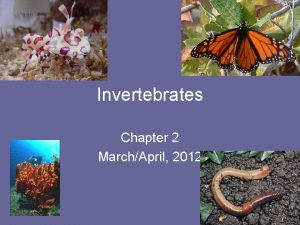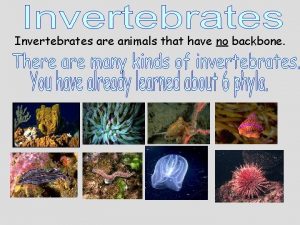Invertebrates Invertebrate have no backbone Sponges and stinging

Invertebrates • Invertebrate- have no backbone • Sponges and stinging animals: – Sponges belong to the phylum Porifera • Classified by the way they eat- Porifera- filter feeders – Stinging animals- belong the phylum- Cnidaria • Have nematocyst- a tiny stinging organelle • Jellyfish, sea anemone, coral

Invertebrate • Mollusks- soft bodies and mantles, and sometimes grow shells – Some are bivalves- have 2 shells • Clams, mussels, oysters – Gastropod- “stomach foot” • Snails • Nudibranchs- slugs – Celphalopod- “head footed” • Squid, octopus, cuddlefish

Invertebrates • Echinoderm- “spiny skin”- is used as defense – Starfish, sea urchins, sea stars • • Filter feeders Radial symmetry Tubed feet Some can regenerate

Invertebrates • Flat worms- bilateral symmetry – Some are parasites- live off and harm another organism (a host) – Some are free living • Roundworms- smooth and round – Not all are parasites – Live in soil, water, dead plants

Invertebrates • Segmented worms- have segments-similar pieces – Each segment has some of the same things • Because of this they are able to regenerate – They are called Annelids – some are parasites but do not live in their host (they live on their host) • i. e. leeches – some live in the sea, some live on land

Invertebrates Arthropods: “jointed foot” Crustaceans: • Has at least 5 pairs of jointed legs and 2 pairs of antennae • Breath with gills • Have some sort of claw • Crab, shrimp, lobster

Invertebrates • Arachnids: – Have eight legs and 2 body segments – Most are not harmful, few are dangerous to humans – Spiders, scorpions, ticks and mites

Invertebrates • Centipedes and millipedes – Have many body segments, exact number depends on creature – Centipedes have 1 pair of legs per segment • “centi-” means 100, but centipedes have anywhere from 30 -274 legs • Front pair of legs have poisonous fangs – Millipedes have 2 pairs of legs on each segment • “milli-” means 1000, but they do not have 1000 legs • Have no poisonous fangs but give off nasty smells


Insects • 90% of all arthropods are insects • They have 3 body segments Head, abdomen, and thorax • Most have 2 pairs of wings • They have different mouth parts – Beetles- have chewing mouthparts – Mosquitoes have piercing mouthparts – Butterflies have siphoning mouthparts

Insects Metamorphosis • There are 2 types of Metamorphosis – Incomplete metamorphosis • 3 stages – Egg – Nymph- an immature insect, looks like adult but wings not functional – Adult- after a nymph molts several times the wings become functional and the nymph becomes an adult

Incomplete Metamorphosis

Insects Metamorphosis • Complete Metamorphosis – Has 4 stages • Egg • Larva- does not look like adult, the insect consumes much, ex. caterpillar • Pupa- transitional stage, may be covered with chrysalis or cocoon, insect does not eat in this stage • Adult- the female insect can now lay eggs and begin the cycle again, ex. butterfly

Complete Metamorphosis

Vertebrates • Vertebrates have a backbone – Fish • Are cold-blooded • Cartilage fish- sharks, skates and rays • Bony fish- most fish, (salmon, bass, etc)

Vertebrates • Amphibians- “double life” – Live ½ life on land – Live ½ in water – Are cold-blooded – Have a life cycle • Egg- are laid in water • Larval stage • adult

Reptiles • Have similar characteristics to amphibians, but they do not have gills during their life • They are cold-blooded • They lay eggs (but only on land, not in water) • They have scaly skin or leathery skin • Main groups – Turtles – Lizards – Snakes

Turtles • Have a unique skeletal structure • Back bones are fused to shell • Many are omnivores • Some are herbivores • Tortoises are land dwellers, with high domed shells – Some are called terrapins • Turtles can live on land or water

Lizards and Snakes • They are cold-blooded • Few are poisonous, most are harmless • Lizards can be carnivorous or herbivores – They live everywhere in the world • All snakes are carnivores – They cannot tear or chew food – They swallow their meal whole • The jaws of a snake are not tightly attached and because of this they can dislocate their jaw allowing it to open quite wide

Crocodilians Crocodiles, alligators and camans They are reptiles- and thus cold-blooded They are carnivorous- fierce predators They have scaly skin, large bodies and short legs • Crocs have v shaped snouts • Gators have u shaped snouts • •

Birds • Birds are warm-blooded • Have wings and most can fly Kiwi, emu, ostrich and penguins and cannot fly • Lay eggs • Have feathers • Some are herbivores and some carnivores – The beak shape can tell you what they eat

Mammals • • • Are warm-blooded Have hair Produce milk for their young Give birth to live offspring Have 3 ear bones Breathe air through lungs

Mammals • Monotremes- they lay eggs – Echidna and platypus • Marsupials- they have pouches out side of the body to allow the underdeveloped offspring to continue to grow big enough to function – Kangaroo, koala, wallaby

Mammals • Rodents, rabbits, and moles- have 2 large front teeth that do not stop growing – Moles are insectivores, they eat insects • Bats- they fly – They are nocturnal- come out at night – Use echolocation to move around and find food • A technique that uses high pitch frequencies to bounce off a surface to detect distance

Mammals • Hoofed mammals – Odd hoofed- odd number of toes • Horses, zebra, burro, mule – Even hoofed- even number of toes • Cow, sheep, goat, deer • Carnivores- meat eating mammals – Cats-have retractable claws- that means when the claws are not in use they go back into the paw • Lions live in prides – Dogs- live in packs – Pinnipeds- these are mammals with a swimming foot • Sea lion, walrus, and seal • Mainly eat fish but will eat mollusks, crustaceans, and even penguins

Mammals • Marine mammals- live in the ocean – Some have blubber to keep warm in cold water – Can hold breath for long time – Some use echolocation – Whales swim in pods (a group of whales)

Mammals • Primates- 2 groups – Lemurs – Monkeys • 2 groups– New world- have broad noses and most have tails that they can use like an arm – Old world- baboons, and monkeys without tails (apes, gorillas, and chimpanzees

Mammals • Humans- we are unique from all other animals in that God make man in His image and gave us a soul
- Slides: 28
